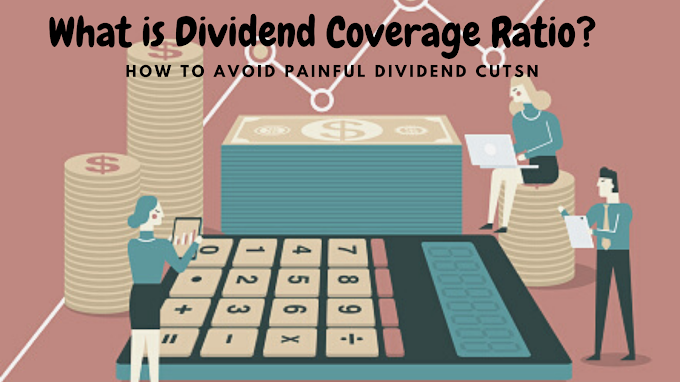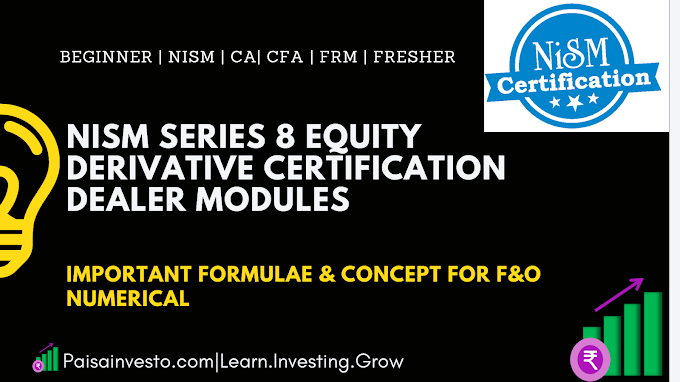Today we study some Important Formule and Concept Related To Future and Option :
Derivative :
- A derivative Price is derived from the underlying / spot Price.
- A derivative is used for Hedging, Arbitrage, and speculation.
- There are four types of derivative :
1. Forward
2. Future
3. Swap
4. Option
Future :
Future Price is derived from its underlying/spot price. Stock and index both tradable in Future Contract.
- Around 146 Companies of Nse Exchange listed in Future
- Only Three Index are Tradable; NIFTY50, BANKNIFTY & NIFTY IT
An important concept and Formula for the Future :
1. There are three open contracts in Derivative.
Ex: September, October, and November; when the September contract gets expire then-new contract open i.e. December contract for trading.
2. There is a lot size/ contract size, this lot size decided by Exchange.
Contract Value = Lot Size * Future Price
For Number of N contract
Total Contract Value = N* Contract Value
3. One should need to pay the Initial Margin/upfront Margin for Buying/selling a Position.
Initial Margin = Contract Value * % decided by Exchange
Note: Initial Margin is daily updated by clearing corporation as per the market volumes and volatility.
4. Every Last Thursday of the month contract will Expire.
5. Mark to Market Settlement on a Daily Basis
6. Gain/Loss Formula :
Gain/Loss = Selling price - buying Price
Note : Loss => Selling price < Buying Price; Profit => Selling Price > Buying Price
Note : Loss => Selling price < Buying Price; Profit => Selling Price > Buying Price
7. Stop Loss: Always define the loss bearing capacity
- In case of buyer: Buying Price > Stop Loss ( you can trail this SL as per requirement or stock Movement)
- In case of Seller: Selling Price < Stop Loss ( you can trail this SL as per requirement or stock Movement)
8. Theoretical Value of Future Contract :
F = Se^rt
Where; F = Future Price
S = Spot Price
e = 2.71828
t = time to expiration
9. Cost Of Carry Model :
Future Price = Spot Price + Cost of Carry
10. Basis :
Basis = Spot price - Future Price
Note: If the Basis is Positive; it means the future price is in discounted as compared to the spot price
If Basis is Negative; its means that Future Price is In Premium as compare to spot Price
11. Beta: Measure the sensitivity of stock/portfolio via-versa the index
Hedge Value of Portfolio = Value of portfolio * Beta
If Beta = 1; this means that % change in index Is equal to % change in Stock Price
Option:
The option buyer has the right but no obligation with regards to buying or selling the underlying asset, while the option writer has the obligation in the contract.
- Around 146 Companies of NSE Exchange listed in Option
- Only Three Index are Tradable; NIFTY, BANK NIFTY & NIFTY IT
Options may be categorised into two main types:
Call Options
Put Options
Participants Of Option :
- BUYER: Premium Pay
- SELLER/WRITER: Received Premium
An important concept and Formula for the Future :
1. Risk and return profile of option contracts
|
|
Risk |
Return |
|
Long |
Premium paid |
Unlimited |
|
Short |
Unlimited |
Premium received |
2. Premium :
Premium = Intrinsic Value + Time Value
Intrinsic Value = Spot Price - Strike Price (Call)
Intrinsic Value = Strike Price - Spot Price (Put)
Intrinsic Value is always Positive and finds only for In The Money option
For OTM/ATM; Intrinsic Value = Zero
3. Break-Even Point :
For Buyer: Strike Price + Premium + Commission
For Seller: Strike Price - Premium - Commission
4. Every Last Thursday of the month Stock option contract will Expire and every Thursday of the week Index Option Expire.
5. Option writer attracts the margin for open a naked position in Call/ Put option.
6. On the expiration day only in the money ITM option having a premium (intrinsic Value) where as OTM & ATM become 0.05.







0 Comments
Please do not enter any span link in the comment box.